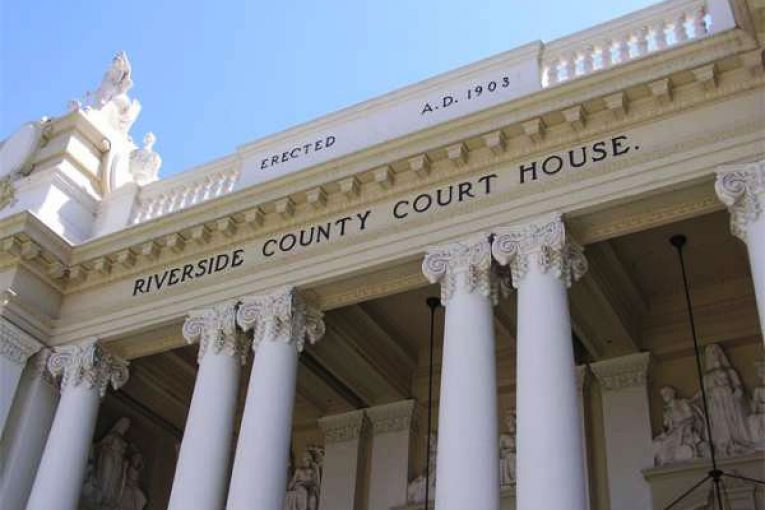

By Amy Berberyan
RIVERSIDE, CA – A motion to suppress evidence failed in a driving under the influence case after an alleged unlawful police search or seizure here last week in Riverside County Superior Court, and the case was set for trial after Deputy District Attorney Juan Manuel Sanchez called just one witness, Officer Kyle Brunson.
After establishing the Officer Brunson had been a member of the California Highway Patrol for eight years, Officer Brunson said he was patrolling on Interstate 10 at 3 a.m. June 21, 2021, when he noticed a white Dodge Avenger going 68 mph in a 60 mph construction zone and also weaving in and out of its lane.
Officer Brunson said that he had been observing the vehicle for “10 seconds or more.” After watching the car go between two lanes, he said he conducted an enforcement stop.
The vehicle yielded, though it was slow to do so, he said, and exited the highway. The white Dodge came to a stop at a gas station, where Officer Brunson contacted the driver. The vehicle held two occupants, with one in the driver’s seat and the other in the passenger’s seat.
After informing the driver about why he had been stopped, Officer Brunson wrote in his report that the driver said he “was coming back from a family barbeque.”
Officer Brunson said he “observed the driver had red, watery eyes” and “could smell the odor of an alcoholic beverage” coming from the vehicle.
When asked if he had been drinking, the driver “stated he had a couple beers.” After conducting a series of field sobriety tests, Officer Brunson noted he performed in an unsatisfactory manner on most of them.
Based on these factors, Officer Brunson concluded the driver was “under the influence of alcohol.”
Deputy Public Defender Rebecca Rodgers questioned the witness, who admitted he had “noticed a mistake” when reviewing his report, and DPD Rodgers asked why he had not added a supplemental report to correct this.
Officer Brunson said that, as he had only observed the mistake that day, he had not had the chance to correct it.
The officer also admitted he had not checked his front-facing radar, his audio devices, and that his devices were not calibrated because someone else did that job or because he was not required to do so every day.
The DPD noted Officer Brunson had never attempted to catch up to or pass the white Dodge. Neither did he position his patrol car beside the Dodge.
Officer Brunson determined the speed of the vehicle by going at a “bumper pace” for a distance of about “several hundred feet” for at least 10 seconds.
DPD Rodgers recalled how his report indicated that the freeway had been a work zone with a posted 60 mph speed limit. Without this posting, the limit would be 70 mph.
The roadwork on the given freeway had potholes, and DPD Rodgers asked if it was possible to see “remnants of old freeway divider lines on that stretch of freeway.” Officer Brunson answered in the affirmative.
DPD Rodgers claimed that Officer Brunson using the bumper pace method rather than his accurate equipment made it questionable whether or not he had determined the driver was truly speeding.
Furthermore, the incident taking place at 3 a.m. and the old and new lines of the construction zone would have made it difficult for a driver to tell whether or not they were in the right lane.
DDA Sanchez maintained, regardless of whether or not this was true, the driver had admitted to drinking. Due to his observations, Officer Brunson ultimately had probable cause to conduct his investigations.
The judge denied the motion to dismiss, and stipulated the trial date of May 23.

